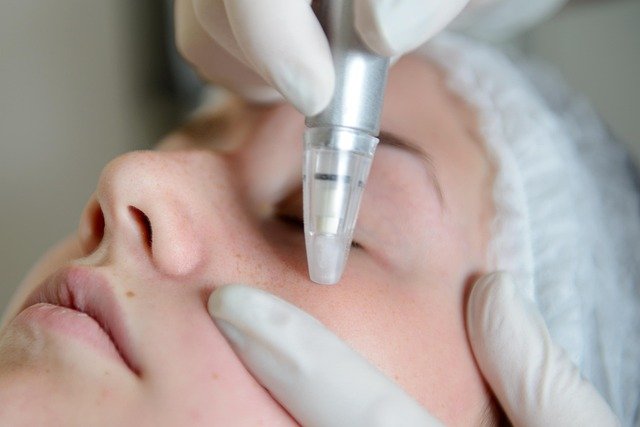Microneedling: Tiny Pricks, Big Results
Microneedling, a minimally invasive cosmetic procedure, has taken the skincare world by storm in recent years. This technique involves creating controlled micro-injuries to the skin using fine needles, triggering the body's natural healing process and stimulating collagen production. While the concept may sound daunting to some, the procedure has gained widespread popularity due to its effectiveness in addressing various skin concerns, from fine lines and wrinkles to acne scars and hyperpigmentation. As more people seek non-surgical solutions for skin rejuvenation, microneedling has emerged as a versatile and accessible option for those looking to improve their skin's texture, tone, and overall appearance.

Historical Context and Evolution
The concept of microneedling can be traced back to ancient times, with practices like acupuncture utilizing similar principles. However, modern microneedling as we know it today began to take shape in the mid-1990s. German dermatologist Ernst Kromayer is credited with developing the first microneedling device, which used rotating wheels of needles to treat scars and hyperpigmentation. Since then, the technology has evolved significantly, with the introduction of automated devices and more refined techniques.
Types of Microneedling Devices
Today, there are several types of microneedling devices available, each with its own unique features:
-
Dermarollers: These handheld devices consist of a roller covered in tiny needles. They are often used for at-home treatments but can be less precise than professional options.
-
Dermapens: These pen-like devices use oscillating needles and offer greater precision and control, making them popular among professionals.
-
Radiofrequency microneedling: This advanced technique combines traditional microneedling with radiofrequency energy to enhance collagen production and skin tightening.
Treatment Process and Expectations
A typical microneedling session begins with cleansing the skin and applying a topical anesthetic to minimize discomfort. The practitioner then moves the device across the treatment area, creating thousands of microscopic punctures. The procedure usually takes 30 minutes to an hour, depending on the size of the area being treated. Patients may experience redness and mild swelling for a few days following the treatment, but downtime is generally minimal.
Benefits and Applications
Microneedling offers a wide range of benefits for various skin concerns:
-
Fine lines and wrinkles: By stimulating collagen production, microneedling can help reduce the appearance of fine lines and wrinkles, promoting a more youthful complexion.
-
Acne scars: The procedure can help break down scar tissue and stimulate new skin cell growth, improving the appearance of acne scars.
-
Hyperpigmentation: Microneedling can help even out skin tone by promoting cell turnover and reducing the appearance of dark spots.
-
Enlarged pores: The treatment can help tighten and refine pores, creating a smoother skin texture.
-
Overall skin rejuvenation: Regular microneedling sessions can improve skin texture, tone, and firmness, resulting in a more radiant complexion.
Combining Microneedling with Other Treatments
One of the advantages of microneedling is its versatility in combining with other skincare treatments. Many practitioners use microneedling as a vehicle for delivering topical serums and growth factors deeper into the skin, enhancing their effectiveness. Popular combinations include:
-
Platelet-rich plasma (PRP): Often referred to as the “vampire facial,” this technique involves applying the patient’s own platelet-rich plasma to the skin during microneedling.
-
Vitamin C serums: Antioxidant-rich serums can be applied during or after microneedling to boost collagen production and protect against free radical damage.
-
Hyaluronic acid: This hydrating ingredient can be used in conjunction with microneedling to improve skin moisture and plumpness.
Safety Considerations and Potential Risks
While microneedling is generally considered safe when performed by a trained professional, there are some potential risks to be aware of:
-
Infection: Proper sterilization of equipment and adherence to aftercare instructions are crucial to prevent infection.
-
Skin irritation: Some patients may experience temporary redness, swelling, or peeling following treatment.
-
Hyperpigmentation: In rare cases, microneedling may cause temporary or permanent darkening of the skin, particularly in individuals with darker skin tones.
-
Allergic reactions: Some people may be sensitive to the topical products used during or after the procedure.
The Future of Microneedling
As technology continues to advance, the future of microneedling looks promising. Researchers are exploring new ways to enhance the treatment’s effectiveness, such as combining it with stem cell therapy or developing more targeted approaches for specific skin concerns. Additionally, the growing demand for non-invasive cosmetic procedures is likely to drive further innovation in microneedling techniques and devices.
In conclusion, microneedling has established itself as a valuable tool in the world of skincare, offering a minimally invasive option for those seeking to improve their skin’s appearance and health. As with any cosmetic procedure, it’s essential to consult with a qualified professional to determine if microneedling is right for you and to ensure the best possible results. With its versatility, effectiveness, and potential for combination with other treatments, microneedling is poised to remain a popular choice for skin rejuvenation in the years to come.





